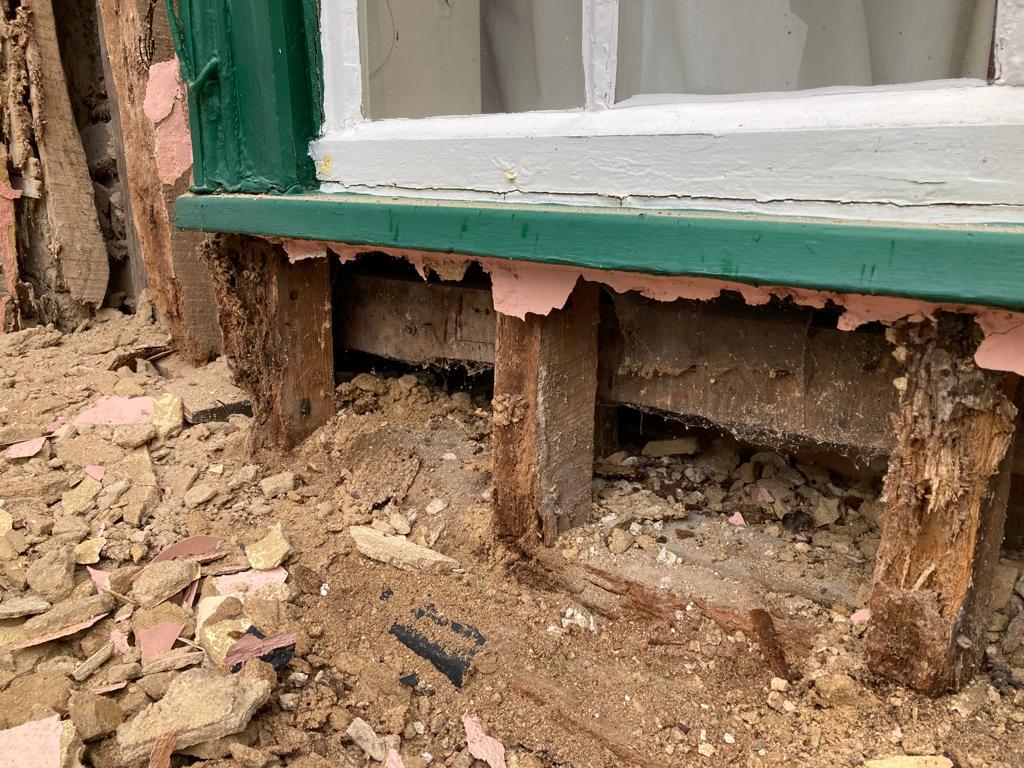We are making great progress at our Elmsett site. The soleplates and frame are now all in. Next steps are the facing bricks and boarding followed by lime plastering.
We are cutting the tenons and mortises in preparation for the soleplates to be installed across the whole building. These are a type of joint that have been used for hundreds of years to join two pieces of wood (or other material). The tenon part acts as a peg, whilst the mortise is the hole/slot in which the tenon is inserted. They create a very strong, stable joint. We are protecting the original wattle and daub panels whilst doing this.
We have begun structural work on a new project in Little Cornard. The first job is removing the party wall chimney from ground to first floor, then we will install Helifix rods to the mortar joints. This will stop any movement from occurring. Next we will be removing the load bearing wall on the stairs and installing an oak frame. We will keep you updated on our progress!
We have been busy working on our project at Elmsett. Here you can see what happens to timber frame when the wrong products are applied - in this case, strong sand and cement.
Strong sand and cement may be a short term fix, but in the long term they dry oiut and cause the frane to decay and absorb moisture, which can then create a habitat for beetles. Some of the mortar will also likely fall out which looks unsightly. At this point, there is usually no option but to remove some of the timber so that it can be inspected by a specialist in traditional building techniques, so that a plan can be made on how to repair or replace the timber.

So far, we have stripped off the strong sand and cement, and removed the concrete slabs. These were too high and were causing bridging damp. Our next steps on this property will be to rebuild the brick plinth with imperial reds and install a slate damp course. We will then replace all the soleplate and oak upright beams with green oak. After that we will install 100mm sheep's wool inbetween the new upright timbers for insulation. Savolit boards will then be fixed to the structure, and then finally, two coats of lime plaster will be applied. We will keep you posted on our progress!